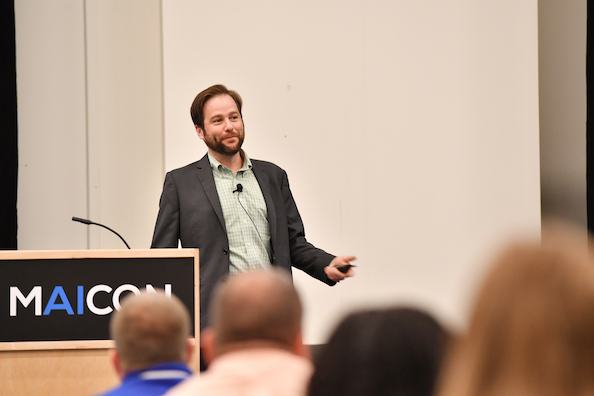Making Content Your Competitive Advantage: How to Ensure Every Article Delivers ROI
Too many companies are stuck in a “publish and pray” mentality and spend way too much time conducting keyword and competitor research. Bringing AI into the content creation process not only saves weeks of research but uncovers more audience insight than can be physically researched by hand.
In this video taken at MAICON 2019, Jeff Coyle explores how AI can drastically improve productivity throughout your content team and help them create more effective content.

Learn how to:
- Identify gaps and opportunities in your content and your competitor’s
- Use content clusters to build topical authority
- Incorporate buyer intent into your content plan
- Avoid publishing bad content

The Evolution of Search
Google has been challenging keyword-driven content for years. Starting in 2010 with the Panda update and its quality focus through 2013 Hummingbird (intent) 2015 Rankbrain (relevance and context) through to today’s environment of continuous updates.
Many keyword research practices are out of date. By the time you have finished thoroughly researching, the SERP has changed.
Content is not just articles and SEO. It touches everything including UX/UI social, email, and audio-visual. Content is used for many things including generating traffic, user engagement and communication, lead nurturing, prospecting, and branding.
You need a strong foundation of high-quality content couples with an equally strong content strategy.
High quality content:
- Adds value to the user by answering their questions/needs.
- Is topically comprehensive.
- Connects to other relevant content.
A strong content strategy helps you:
- Become an authority.
- Improve content quality.
- Fully cover the buy cycle.
- Increase content ROI.
Content Clusters
Content clusters are interconnected pieces of content that exhibit your site’s expertise on a given topic. Content clusters are typically comprised of a main page (also known as pillar page or cornerstone content), supporting content pages and landing pages.
User Intent
User intent is about understanding why people use specific search terms and what they are trying to accomplish. Good content strategy should map to user intent. Search engine results pages frequently have features such as knowledge graph, featured snippets, “people also ask” that can help in determining the intent behind a particular search query.
Leveraging AI
Save time by having AI do the research for you.
- Analyze millions of pages, vs just the top 20.
- Identify gaps in coverage.
- Pinpoint optimization opportunities.
Score content to predict and improve performance before publishing.
- Identify poor quality early.
- Improve topical coverage
- Compare to competitors ahead of time
Resources Mentioned
- Google Natural Language API and AutoML
- BERT, ELMo, Grover
- IBM Watson Natural Language Understanding
- Amazon Comprehend
- OpenAI Gym, Baselines, Transformer —- and GPT-2
- Stanford Courses (CS224n is particularly solid)
Stephen leads the content strategy blog for MarketMuse, an AI-powered Content Intelligence and Strategy Platform. You can connect with him on social or his personal blog.